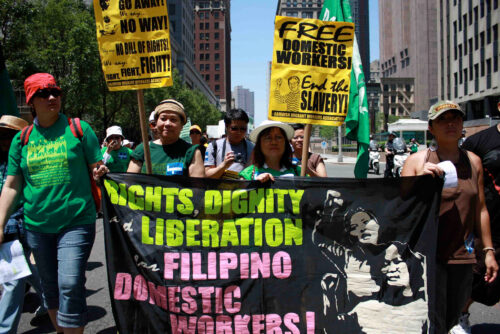Queer theoretical work has contributed to conceptual and contextual shifts in academic discourse. The discipline of religion is being challenged, certainly in the ways it has been constituted in its modern academic version, by what current queer studies bring to the discussion. Likewise, what emerges as proper object of study for queer scholarship on gender and religion is affected by conversations at this intersection. In my view, queer studies can helpfully contribute to producing a more un-disciplined study of religion (and secularism) that takes seriously shifts resulting from transnational and diasporic queer scholarship, as well as shifts in conceptions of agency and resistance resulting from analyses and critique of homonormativity, including critical interventions in homonationalism, Islamophobia, and the expansions of carceral surveillance states.
Theoretical approaches to transnational sexualities and queer diasporic identities have challenged queer theorists to address identities, community and consumption practices, and the workings of kinship and family practices in more complex configurations. Two particularly influential works in this context to my mind have been those of Saba Mahmood,1 whose helpful challenge to feminist conceptions of agency in Politics of Piety is slowly being used in a variety of related contexts, and Jasbir Puar2 whose work on homonationalism in Terrorist Assemblages can challenge to the scope of queer terminology as well as proper objects of study within the discipline of religious studies. Several works exploring queer kinship and work on, or challenges to, the security/incarceration complex, provide further important challenges to religious studies. In what follows, I briefly mention some work at the boundaries of religious studies that may be usefully explored further, and that also may benefit from perspectives from within religious studies.
Queering Kinship
One of the most helpful aspects of queer critique has been its ability to shift the questions and locus of investigation from seemingly obvious (i.e. normative, coherent, existing) identities and subjects. In studying kinship queerly, we now have several works that have moved away from reifying queer (as LGBT) identity or the incessant focus on homonormative gay rights politics. I have found particularly valuable David Eng’s The Feeling of Kinship (in which he explores the dangers of queer liberalism and offers provocative readings from the vantage point of queer diasporic subjects).3 Similarly, Shelley Park, in Mothering Queerly, Queering Motherhood, analyses practices that resist monomaternalism in adoptive, lesbian, queer, blended, and polygamous families involving more than one mother.4 These approaches helpfully raise questions of queer kinship that step outside of and reframe debates from postcolonial and feminist queer perspectives that may resist the homonormative reification of (certain kinds of) family values as key issue for queer scholarship. They also offer rich opportunity for analysis of practices and negotiations of religion as they contribute to shifting identities and kinship practices.
One example I have previously noted concerned Bubot Niyar, a documentary by Israeli filmmaker Tomer Heymann.5 The film chronicles the lives of several transgender Filipino migrant workers in Israel, who also perform in a weekly drag show, called Paper Dolls, for the Filipino queer community in Tel Aviv. Filling the positions taken by Palestinian workers before the second Intifada in 2000, most work as health caretakers for elderly Orthodox Jewish Israelis and are precariously positioned within Israeli society, because they are ineligible for citizenship and their work visas are tied to their employment. The documentary traces several individuals’ transgender identities as they are differently defined vis-à-vis dominant norms both of Israeli society or larger ‘Western’ normative discourse, and vis-à-vis the pre-migration Filipino context. Allan Isaac argues6 that Heymann’s depiction of the rituals and communities invokes “multiple sets of mediations in gender and national belonging, but gestures towards a different sense of pleasure, danger and beauty/byuti, a concept elaborated on by Martin Manalansan in Global Divas.”7 Additionally, we might find rich layers of signification that relate to gender and religion, such as the question of how Jewish and Catholic practices of kinship intersect with narratives of national belonging that support and/or undo specific gendered roles.
Also located within cultural studies, Park’s book ends with a chapter on polygamy. The current hypervisibility (in US American popular culture) of polygamous families/women (mostly white and Mormon) offers provocative questions for queer religious scholarship. In addition to grappling with the conventional erasure of polygamous women from reasonable subject positions in feminist discourse, we should also investigate the absence of non-Christian and non-American forms of polygamy, as practiced in the U.S./Europe or elsewhere, from the current surge of documentaries, fictional narratives, and journalistic interest in polygamous women. Of course the latter is related to the strategies of respectability often pursued in addressing the former. Nonetheless, there remain many interesting challenges to conceptions of feminist queer agency and to normative conceptions of kinship as they function also within queer discourse.
Queering Security/Incarceration
Building on Puar,8 critical approaches to the recruitment of homonormative logics in the service of anti-terrorism and the related vilification of Islam have been considering the recruitment of queerness in the specific religious-political issue of Islamophobia. As Anna Agathangelou, M. Daniel Bassichis, and Tamara Spira suggest, the basis for the decriminalization of sodomy and the demand for recognition of same sex marriage “is a highly privatized, monogamous, and white(ned) docile subjectivity that has been decriminalized and ostensibly invited into the doors of U.S. national belonging through recent shifts in the gendered and sexual order.”9 The neoliberal logics that affirm private rights and security are closely connected to homonormative strategies, as in the Human Right Campaign’s advocacy for “the good queer citizen [to gain] entrance into the nation through the displacement and explicit effacement of racial, sexual, and class antagonism and inequities.”10 In the North American context, but perhaps also elsewhere, recently gained gay rights and the increasingly privatized freedoms for queer subjects coincide with the loss of rights of (more) deviant and non-national (non)subjects, often related to domestic policing and increases in incarceration of immigrants as well as religiously and racially non-normative bodies. That these non-citizen bodies and the (specifically black and brown) bodies within the U.S. are relegated into the backdrop becomes hardly noticeable amidst celebration of new gay rights, and the civic death these bodies face become more thoroughly naturalized as a result of the gains in, and privatization of, the queer subject position. While unmistakably posing critical issues in ethics, work on the non-normativity of immigrant or terrorist bodies has not yet been fully taken up in religious studies scholarship, but offers important and provocative challenges to the study of religion and gender, especially as it relates to contemporary cultural and political discourse.
In this context I have tried to understand the religion/secular division in the production of “good” prisoners or the good that incarceration is supposed to produce (and the use of some forms of religion in the process). While such a project may not seem to belong within “queer studies in religion” exactly, it engages the blurry lines separating secular/religion in the context of the affective economies around security, crime, and punishment. What counts as valuable bodies and subjectivities appears tightly connected to normative national ideologies that are imbricated with specific histories of religious valuing.
Distinctions between the categories of religious and secular have become widely contested and many scholars involved in either realm are debating their usefulness. At the same time, quite a few areas of American life continue to rely on allegedly clear boundaries between “Church” and “State.” Religious and educational practices aimed at (individual or social) transformation within the carceral realm of the American prison industry offer a particularly intriguing site to observe the shifting terrain and to reflect on some consequences for engaged or transformative pedagogy within highly disciplinary and neoliberal realms.
What are we to make of religious practices that are instrumentalized in secular contexts and measured according to categories of secular success? The appropriation of contemplative and other practices derived from Buddhist and Hindu contexts (such as meditation and yoga) in various American contexts is well documented. Whether this appropriation indicates a “loss” (of authenticity), should be considered creative appropriation in new contexts, or simply is part of the regular transformation of and within all religious traditions has also been well rehearsed. And yet, as we (as religion scholars) may become less sure about the dividing line between religion and secularism (and may opt for post-secular terminology), that same division continues to function prominently in legal conflicts and policy debates in some of the most central American disciplinary institutions (i.e., schools and prisons).
In ongoing research I investigate examples of (as defined by the State Department of Correction) religiously based programming and its appropriation in (again, as defined by the Department of Correction) more clearly secular realms related to education and “betterment.” The project draws on field observations gathered over a ten year span from religious (Buddhist) chaplaincy programming and (secular) meditation based educational programming in several large Florida women’s prisons, and data from interviews with volunteer instructors, prison administrators, and incarcerated program participants.
I am not interested in adjudicating the religious or secular “authenticity” of what we may describe as transformed or appropriated practices. And yet, I am interested in what the use of religious practices for the express purpose of success (measured in “secular” terms) can tell us about the shifting characteristics of the religion/secular distinction—and what those involved in activist and transformative pedagogical practices may need to consider and anticipate.
Religion in the context of prison exists in a complex relationship to normativity. While some forms of Protestant Christianity are recruited as helpmate to rehabilitation (such as in “faith-based” programming) and support normative concepts of the potential “good citizen,” religion in various forms also surfaces as threat and indicator of abjection (consider, for example the treatment of Islam as correlating predictor of inmate resistance or disciplinary problems). Sometimes even Evangelical Christianity can become the non-normative other (as is the case in the portrayal of one especially Evangelical rural poor woman as the most crazy and abject inmate in the popular Netflix series Orange is the New Black).11 When (specific) religious histories and practices are recruited in the guise of seemingly secular norms in the production of disciplinary subjects, we ought to ask how religion (in faith based initiatives or as threatening specter) can “have it both ways” in relation to political and legal normativity, especially when we consider that sexuality and kinship are intimately connected (as many aspects of “betterment” programs are directly focused on heteronormative ideals, shoring up responsibility for children and nuclear families as paramount virtue).
- Saba Mahmood, Politics of Piety: The Islamic Revival and the Feminist Subject, (Princeton: Princeton University Press, 2005). [↩]
- Jasbir Puar, Terrorist Assemblages: Homonationalism in Queer Times (Durham: Duke University Press, 2007). [↩]
- David Eng, The Feeling of Kinship: Queer Liberalism and the Racialization of Intimacy (Durham: Duke University Press, 2010). [↩]
- Shelley Park, Mothering Queerly, Queering Motherhood: Resisting Monomaternalism in Adoptive, Lesbian, Blended, and Polygamous Families (New York: SUNY Press, 2013). [↩]
- Bubot Niyar (Paper Dolls), directed by Tomer Heymann (2006; Tel Aviv; Claudius Films), Documentary Film. [↩]
- Allan Isaac, “Filipino Visuality and Other Minor Diversions” (paper presented at “Affective Tendencies: Bodies, Pleasures, Sexualities,” Rutgers University, October 9, 2010). [↩]
- Martin Manalansan, Global Divas: Filipino Gay Men in the Diaspora (Durham: Duke University Press, 2003). [↩]
- Jasbir Puar, Terrorist Assemblages. [↩]
- Anna Agathangelou, M. Daniel Bassichis, and Tamara Spira, “Intimate Investments: Homonormativity, Global Lockdown, and the Seduction of Empire,” Radical History Review 100 (2008):124. [↩]
- Ibid., 124. [↩]
- Orange is the New Black, directed by Jenji Kohan (2013-2014; North Vancouver, Canada; Lionsgate Television). Television Series. [↩]




